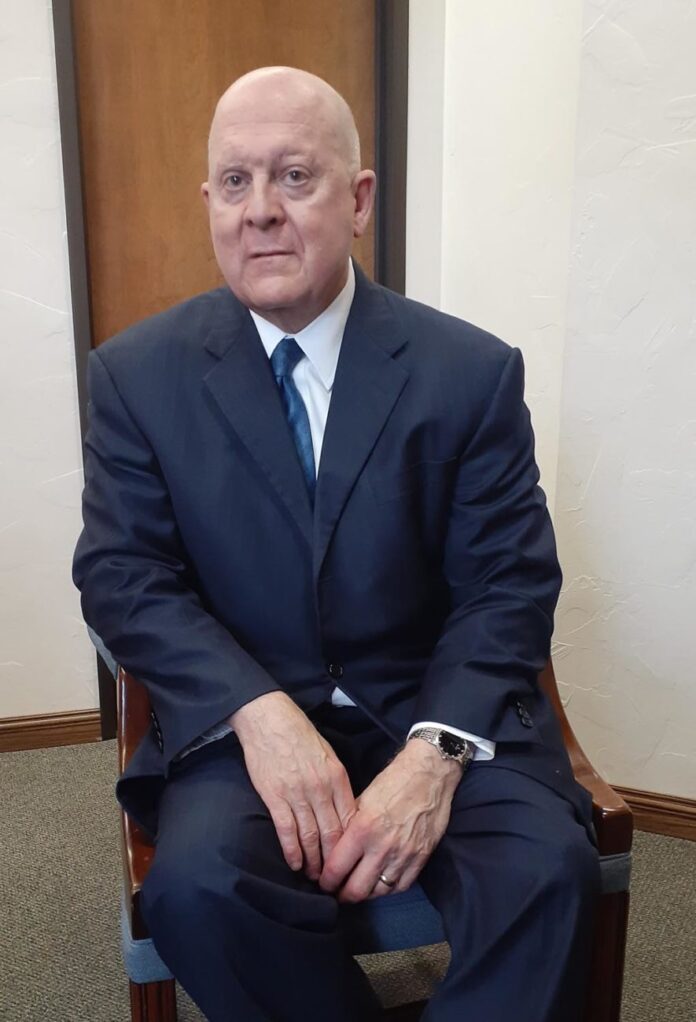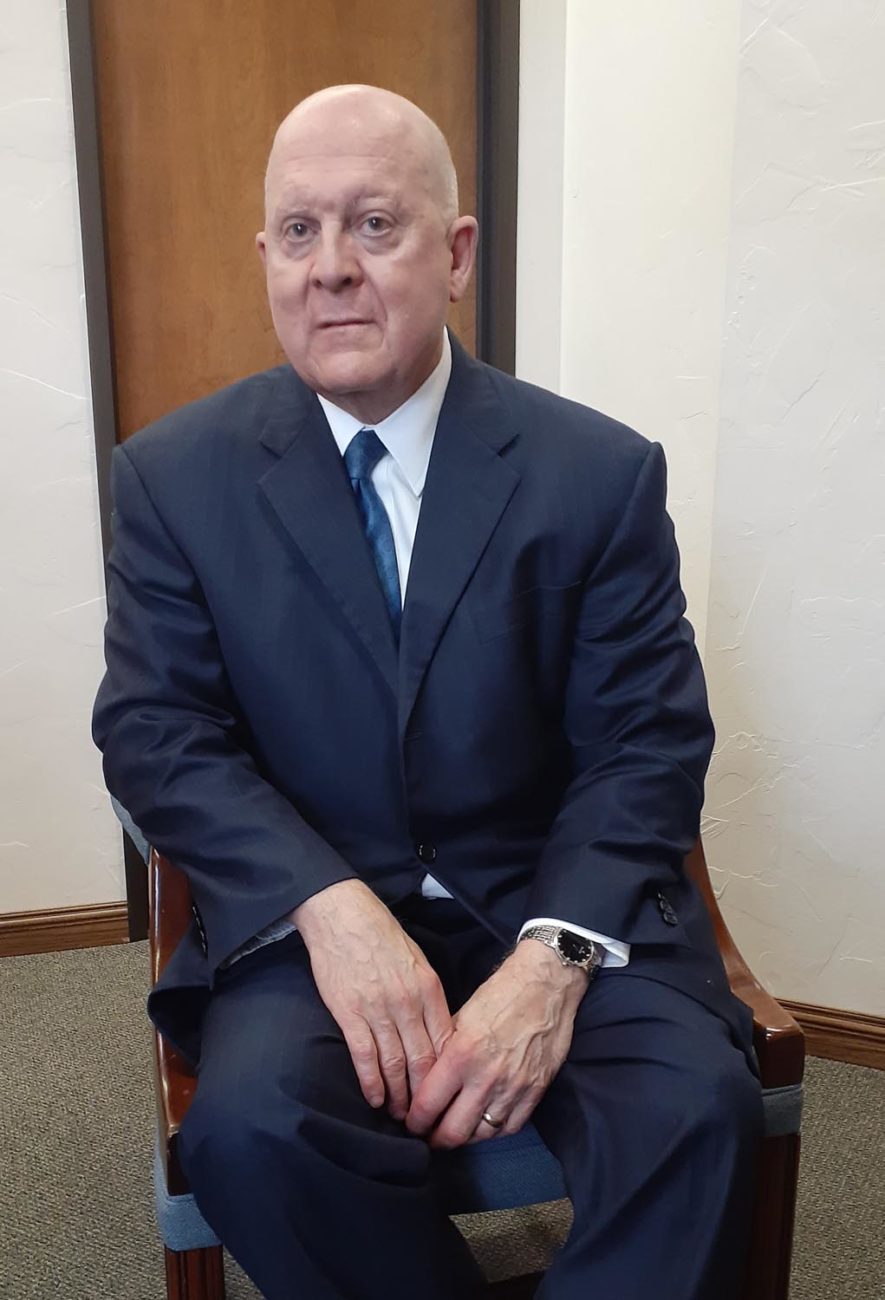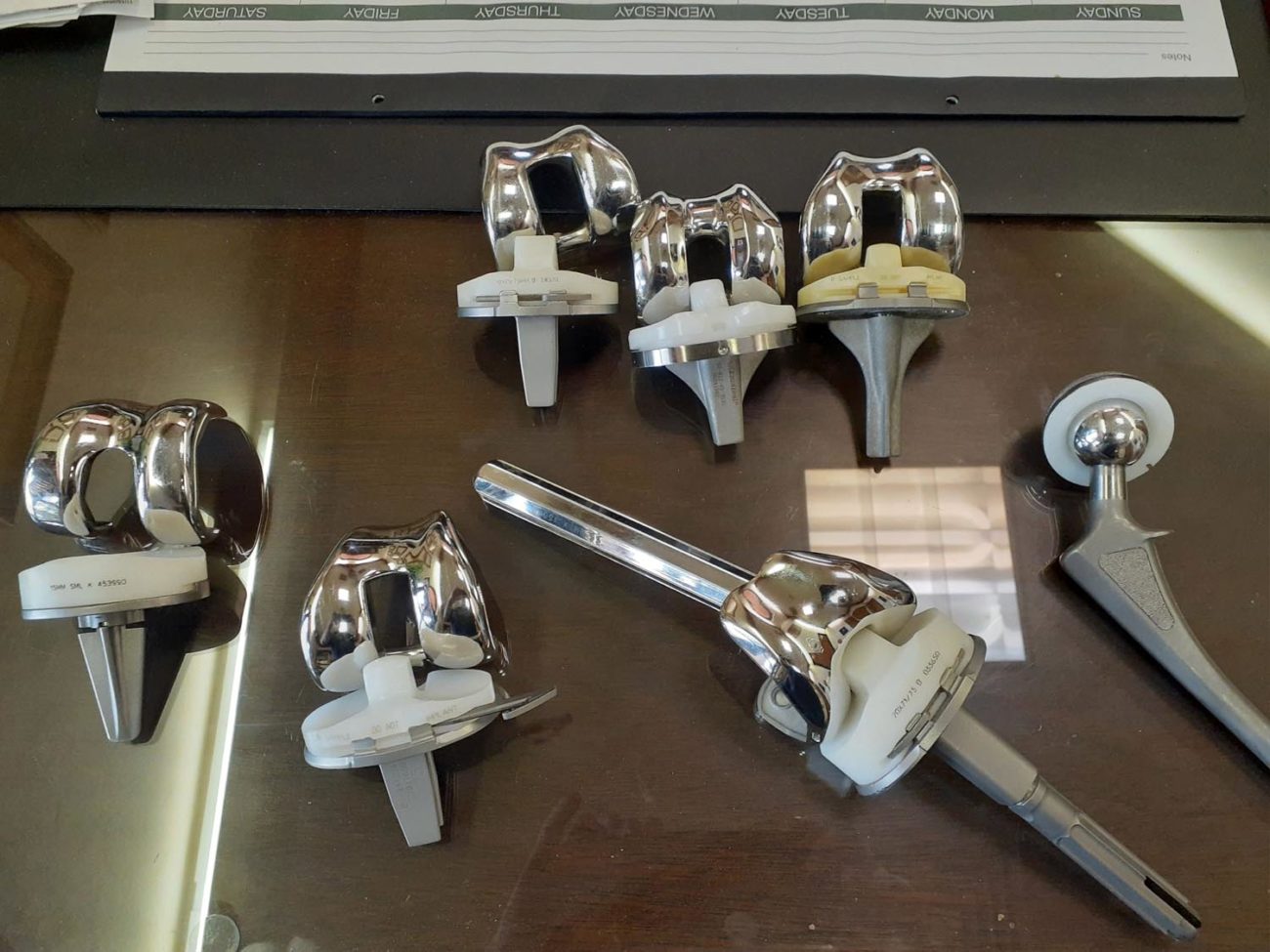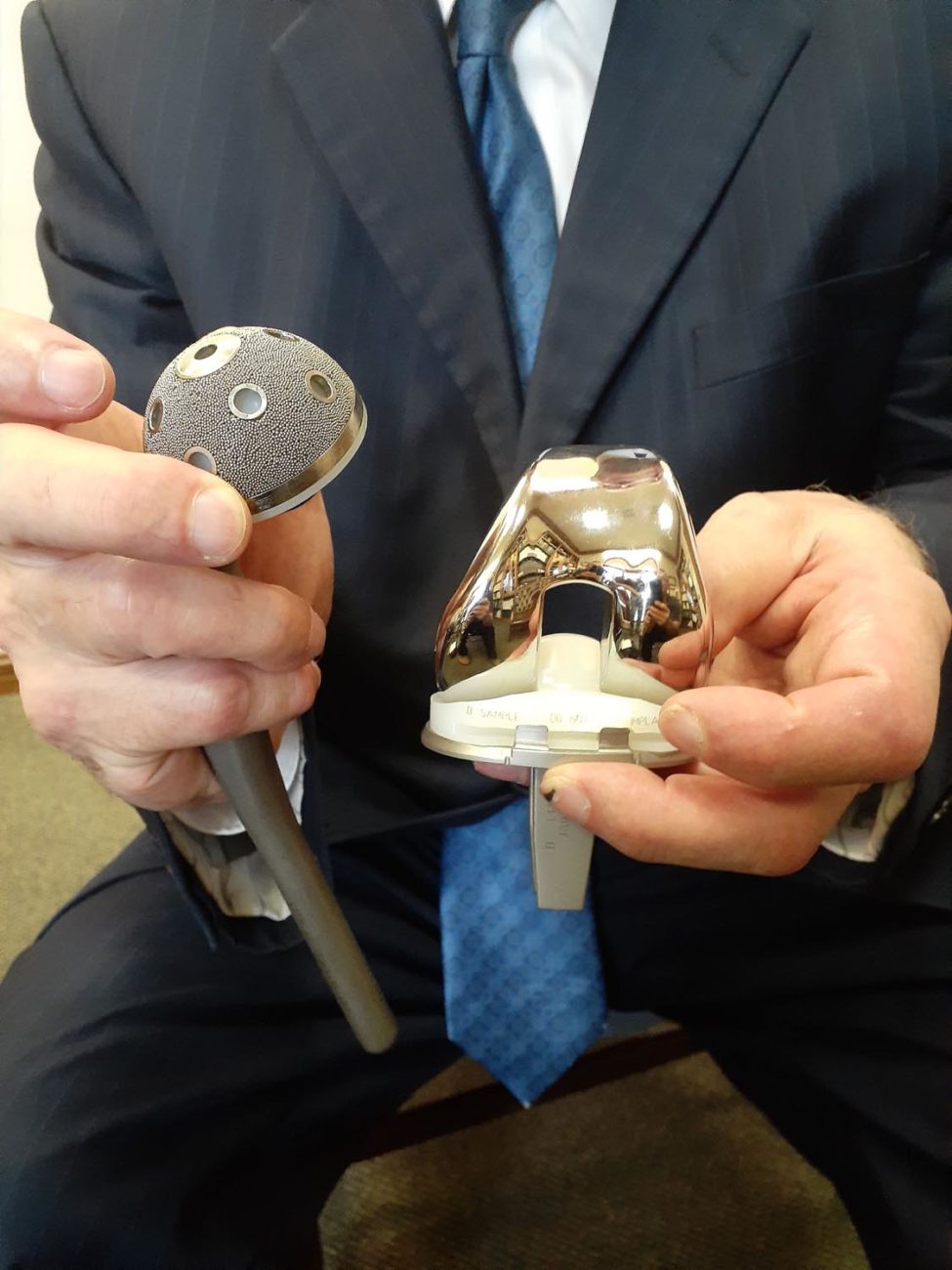HARLINGEN — They come in grimacing with pain.
They leave with smiles on their faces, thanks to the physicians, nurses and other medical personnel at the orthopedics/joint replacement program at Valley Baptist Medical Center. That’s where people go to get a new hip or knee after those joints deteriorate.
“Overall, the folks are usually between 50 and 90 years old,” said Dr. Rick Bassett, medical director of the program.
“That’s usually the group of people, because these are the folks that have arthritis,” Bassett said. “They have gotten to the point where medicines and injections no longer give enough relief. Their X-rays show that the joint has worn down and there’s bone rubbing on bone.”‘
Once that happens, the patients endure continuous pain.
“Usually the thing we have to consider is a new surface, which is what the replacements are, new surfaces,” he said.
Why it happens
Considering the amount of pressure people put on their hips and knees, it’s understandable they’d eventually wear out.
“We take an average of about 3,000 steps a day,” Bassett said. “If you multiply 3,000 steps a day by 365 days of the year, it comes out to about a million steps a year.”
Taking these numbers into account, a person at age 70 will have taken an average of 70 million steps. Cartilage in the bones is only about an eighth to a quarter inch thick, Bassett said. It’s kind of remarkable, therefore, that the cartilage would stand up to that kind of a beating, he said.
Compound that with life occurrences and you’re almost certain to need help.
“Injuries, no question, kind of make this cartilage wear out faster,” Bassett said. “If you had a bad injury from football and damaged the ligaments and the cartilage it’s more likely to wear down than if you haven’t.”
A person’s weight can also be a factor.
“The force on our knees and our hips is about three times our weight,” Bassett said. “As you proceed to take one step after the other, you notice that all the weight goes on the joint. To keep it from collapsing, our muscles compress the joint.”
Say for example you weigh 33 pounds more than you should. Thirty-three times that factor of 33 is about 99 or 100, Bassett said. If you’re taking a million steps a year that’s 100 million extra pounds on cartilage that’s a quarter of an inch thick. Over 10 years, that’s an extra billion pounds, he said.
“It’s basically the activity, hard work, trauma and the person’s weight, but also the knees and hips that you inherit from your parents,” Bassett said. “Some of us will inherit very durable joints. Others of us, like any medical situation, we’re not as lucky. Our joints will wear out more readily.”
How the healing happens
Bassett couldn’t stop championing the nurses in the orthopedics/joint replacement program.
“I like to brag about our nurses because they’ve won this award, top five in Texas, five years straight,” he said. “This is a place that needs that. We’re undersupplied for orthopedic surgeons and other specialties. And when there is an opportunity they’re obviously doing a good deal of viable work.”
It also requires a team to create knew hip and knee replacements, and he has patents for several of those. His glistening chrome cobalt joints and their titanium stems lay on his desk, the fruit of his inventive talents. Turns out, not only does Bassett have medical degrees, he also has a degree in engineering.
“I’ve been one of the chief designers on all those implants,” he said with a mixture of pride and humility.
“These are all prostheses that I helped design,” he said.
But the idea is only the beginning.
“When you do these, you always do it as part of a team,” he said. “Usually the team includes obvious physicians. It also includes engineers, it also includes manufacturers that are capable of making these. And you also want a salesperson, to make sure you’re in touch with the market.”
Lots of changes
The field of hip and knee replacement has changed a great deal during the past three decades. Advances in medications and procedures have shortened hospital stays from days to hours.
“Nowadays people come into the hospital on the morning of the surgery and the surgery is done that day,” Bassett said. “Close to 90 percent of the folks go home the next morning.”
Quite a far cry from the week-long hospital stay 30 years ago.
How and why did it change so much?
“A lot of it has to do with the medicines,” Bassett said. “We put all kinds of special medicines now all around where the operation is done. This is probably the best thing that physicians have done in the last 20 years because the person is comfortable and they’re able to walk the day of the surgery.”
Doctors no longer have to cut through much muscle; hip and knee replacement surgery is now a minimally invasive procedure.
Advances in new replacements
The basic purpose of a hip and knee replacement is creating a new surface. Those surfaces have changed a great deal; 40 years ago replacements lasted only 10 years, but changes in materials have increased their longevity.
“They were the same polyethylene but not compression molded,” he said. “If you look at the new types, it looks like only one molecule because all of these things have been compressed to the point that they are much stronger, less friction, and easier movement.”
Joints are now made of chrome cobalt, a special type of surgical steel, and the surfaces are “ultra high density compression molded polyethylene.
“About 25 years ago or so they started compressing these cushions and plastics and they made them far, far stronger,” he said. “They’re now lasting 25 – 35 years. We’re not quite sure because they only started a short period of time ago, but they are far more durable.”
The future
He’s encouraged by the possibilities from the UTRGV School of Medicine.
“Things are changing as we go year by year,” he said. “It is being developed right now. So we’re in the growing stages, but it’s very exciting and we have high hopes for it.”







